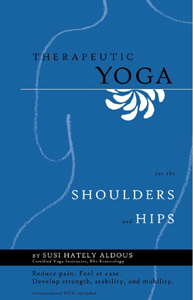 Back pain affects about 80 percent of Americans at some point in their lives and is among the most common complaint received and treated by physicians. Most often, the exact cause of the pain is not addressed or properly diagnosed but masked with pain medication causing the problem to worsen with time.
Back pain affects about 80 percent of Americans at some point in their lives and is among the most common complaint received and treated by physicians. Most often, the exact cause of the pain is not addressed or properly diagnosed but masked with pain medication causing the problem to worsen with time.
The list seem endless as to why so many people suffer from problems with their backs including: being overweight, having bad posture, sitting for hours at a desk without taking breaks, exercising the wrong way, and repetitive movement. What most don’t realize is that the root of the pain may lay in a completely different part of the body. “There are times when we feel pain in the immediate area of weakness, but that typically isn’t the source of the problem,” explains Susi Hately Aldous, yogi, trained kinesiologist and founder of Functional Synergy. “Back pain can stem from a number of places in your body such as if your shoulders are not properly aligned or your hips are too stiff. If people learned how to move properly many of their back issues would be alleviated.”
Susi explains that yoga can help improve back pain in three ways:
1. Gentle stretches and strengthening techniques. Gentle stretches and strengthening techniques unwind myofascial tightness and imbalances.
2. Increase body awareness. By increasing one’s awareness of how they sit, stand, walk and move generally, people can learn some of the causes behind their pain. Once aware of the cause, change can be made.
3. Improve breathing. Effective breathing requires fluid movement of the diaphragm. Without this fluid movement excessive tension builds. Effective breathing also induces a “relaxation response” in the parasympathetic nervous system. This response helps to further relieve muscle tension and pain.
The most common physical limitations in people with back pain are in their shoulders and hips. If the functioning of the shoulders and hips improves, the pain level becomes much more manageable or resolved. Improving function requires a balance of mobility, stability and strength. It isn’t just about stretching.
“A combination of these three aspects is required to truly pull yourself out of pain,” says Susi, whose customized therapeutic yoga programs blend the art of Hatha yoga asanas, breathing techniques and meditation with the modern scientific understanding of kinesiology, anatomy and physiology. It is a balanced and mindful approach to health and healing which enables one to develop awareness and a sense of ease. The goal is to treat the underlying pain and root of the problem and maintain proper levels of comfort, allowing clients to live life to the fullest wherever their starting point is. Her clients come from many different walks of life, from cancer survivors and people with chronic pain, lupus, fibromyalgia and migraines to professional athletes and fitness enthusiasts wanting to improve their performance.
 Susi Hately Aldous is a renowned yoga teacher and author of several international best-selling yoga books. Her latest title, Advancing Your Yoga Practice: the Art of Slowing Down launched in September 2008 and follows her other titles including Therapeutic Yoga, Yoga for the Desk Jockey and, Anatomy and Asana: Preventing Yoga Injuries Series. Her yoga skills are enhanced by her B.Sc. in kinesiology, post-graduate training in mind-body medicine and ergonomics and, practical field experience assisting companies with disability management and workplace safety issues.
Susi Hately Aldous is a renowned yoga teacher and author of several international best-selling yoga books. Her latest title, Advancing Your Yoga Practice: the Art of Slowing Down launched in September 2008 and follows her other titles including Therapeutic Yoga, Yoga for the Desk Jockey and, Anatomy and Asana: Preventing Yoga Injuries Series. Her yoga skills are enhanced by her B.Sc. in kinesiology, post-graduate training in mind-body medicine and ergonomics and, practical field experience assisting companies with disability management and workplace safety issues.
Susi’s main focus and expertise is in helping people overcome pain and injuries with her customized yoga therapy programs. Since 2004, Susi teaches a comprehensive therapeutic certification program for aspiring instructors to learn the importance of well-being as it affects various conditions. This training program, based on the Hatha yoga method, encompasses her wide range of acquired disciplines including kinesiology, yoga iRest (yoga nidra), rehabilitation, modern mind-body science and practical experience as an exercise therapist and ergonomics consultant. Find more info at www.functionalsynergy.com.

